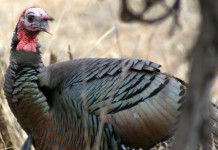Texas is home to numerous exotic species that were transplanted for sporting purposes. Those notable additions — including nilgai antelope in South Texas, pheasants in the Rolling Plains and Panhandle, and dozens of other horned critters on Hill Country ranches — have all provided exceptional outdoors opportunities that help pump funding into conservation initiatives while helping protect these populations for future generations.
However, for every success story with an introduced species, there are a dozen more about alien invaders, so-called “invasives,” that threaten the native ecosystems of the Lone Star State. Many of these invasive species made their way into local habitats by accident, or, in some instances, negligence. Notable among these invaders are lionfish, zebra mussels and giant salvinia.
Feral hogs, zebra mussels, lionfish among worst Texas invasives
The negligence factor could be costly if you’re found to have introduced another alien invader by accident onto our landscape by simply utilizing a common bait that works for redfish and trout in saltwater and multiple catfish species in freshwater. Shrimp is among the most common natural baits used in Texas, and while the frozen variety typically doesn’t work as well as the live or fresh dead version, it’s cheaper and easier to handle.
However, that frozen shrimp also is almost certain to have originated from an international aquaculture environment, meaning it could harbor diseases, including white spot syndrome virus and yellow head virus. Those diseases don’t occur naturally in brown, white and pink shrimp populations in the Gulf of Mexico and Texas bay systems, but if introduced, could be damaging.
A recent article by Shannon Tompkins of the Houston Chronicle details just how the introduction of non-native shrimp by anglers and bait stand operators could result in the introduction of two diseases that could potentially wipe out native shrimp populations.
It also provides insight into the potential penalty for introducing non-native shrimp into Texas waterways: a Class C misdemeanor citation from a state game warden.
The situation is similar in concept to chronic wasting disease in Texas whitetail deer herds. While the disease wasn’t detected in the state until 2012, the importation of non-native deer from states that have been hit hard by CWD remains the greatest potential threat to our native herds. As such, that importation was halted by Texas Parks & Wildlife, with huge crackdowns on those who have been found to continue to bring in deer from out of state for breeding and hunting operations.
While some species have been a boon to the outdoors community in Texas, others will continue to be a scourge. Make sure you’re doing your part to keep these alien invaders out of our native landscapes and waterways.




















